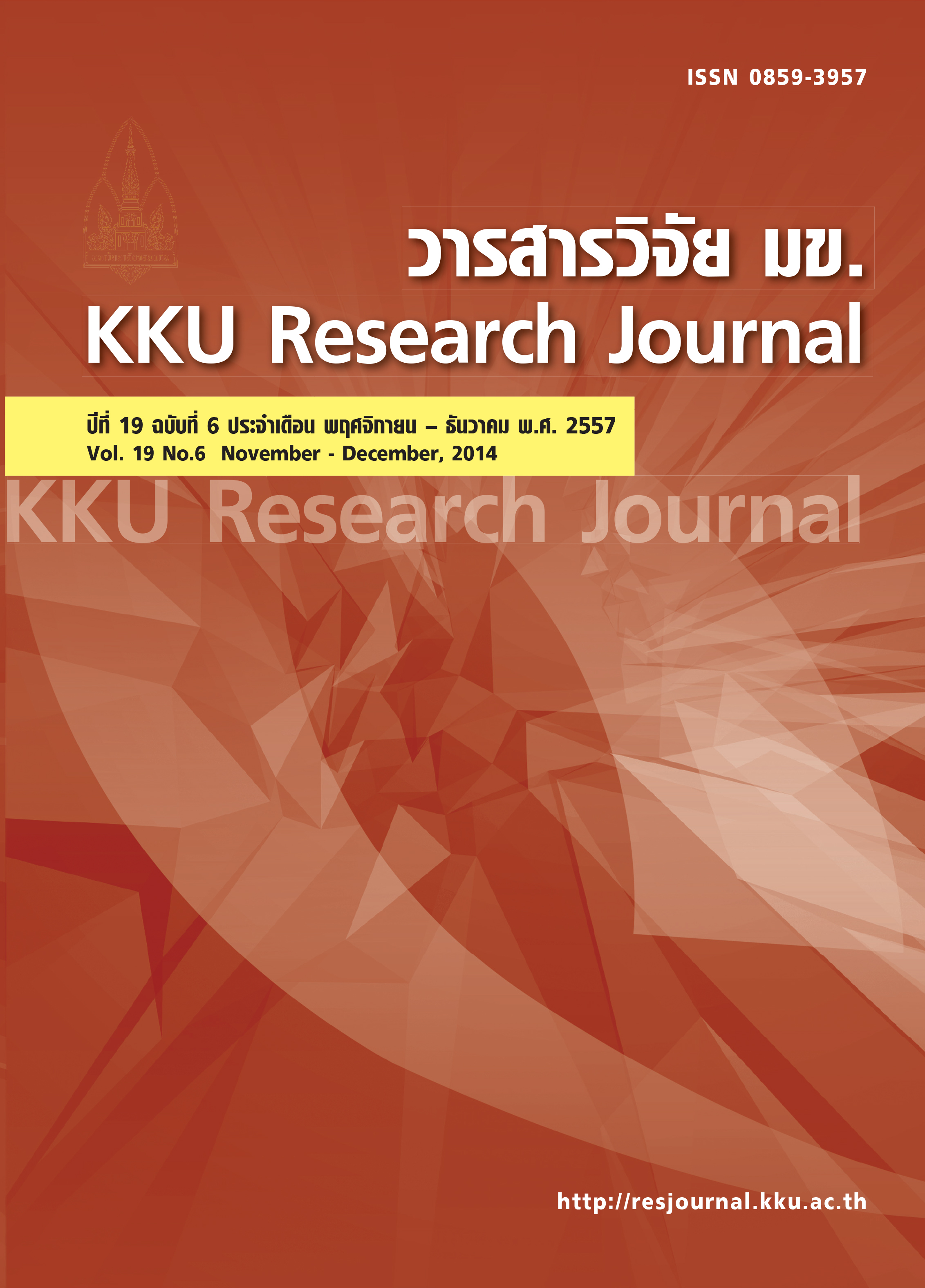Effect of culture media and different cereal grains on growth and spore production of Beauveria bassiana
Main Article Content
Abstract
The white muscardine fungus Beauveria bassiana was isolated from cultivated soil of the northeast of Thailand and derived from govermental section in total of 11 isolates. Growth of all isolates was evaluated using Sabouraud dextrose agar + yeast extract (SDAY) medium for 7, 14 and 21 days. The colonies were different among isolates such as circular-verucose shape, nearly fl at / proliferate/wavy, colony color from white-light yellow, produced white spores with global shape. Old colony was similar to starch or chalk powder, mycelia became fl at when sporulated. The isolate IPKKU 252 grew the best with statistical difference (P<0.05) on SDAY medium evaluated in 7 days after inoculation (? 21.83 mm), for 14 and 21 days after inoculation IPKKU 251 grew well with ? 51.17 mm and ? 62.83 mm, respectively. Growth of B. bassiana on 5 media were tested in 14 days after inoculation. Result showed that IPKKU 253 showed the best hyphal growth (? 56.50 mm on SDAY), but not signi fi cantly different with IPKKU 251(? 54.33 mm on SDAY). In comparison among 7 isolates, the IPKKU 253 showed the best average hyphal growth on most media (? 48.10 mm), but not signi fi cantly different to IPKKU 251 (? 46.87 mm). Among 5 media, the SDAY was suitable medium for B. bassiana cultivation (? 43.43 mm), but not signi fi cantly different (P>0.05) with PDA (? 42.79 mm). Mass production of the white muscardine fungus (3 isolates, IPKKU 251, IPKKU 252 and IPKKU 253) were tested using different cereal grains cultured for 7, 14, 21 and 28 days. The IPKKU 252 grew well on broken grain “Sao Hai” and produced the most spore numbers of 4.89?109, 5.37?109, 9.98?109 and 1.15?1010spores/g, respectively. In comparison among 3 isolates, the IPKKU 252 showed the highest average spores amount in all period tested (7-28 days) with signi fi cant difference than other isolates. The followed isolates were IPKKU 253 and IPKKU 251, respectively. Among 5 types of cereal grains, the broken grain “Sao Hai” was the most suitable medium for spore production. It expressed statistical signi fi cantly different (P<0.05) with maximum spore numbers per gram 6.37?1010 spores/g) than other grains. Sao Hai rice grain, broken corn and sorghum grain were ranked in descending order. All isolates of B. bassiana produced average spores in different numbers depending on age. The average of maximum spores was detected signi fi cantly (P<0.05) in 28 days than other ages (7, 14, 21 days) after inoculation. Comparison of cooked SaoHai rice with autoclaved and non autoclaved, it was found that the non autoclaved-cooked rice treatments were contaminated by fungi 2-3 days after inoculation. Whereas, IPKKU 252 cultured on broken grain “Sao Hai” and autoclaved, exhibited maximum spore numbers of 3.09?109, 5.81?109, 1.17?1010 and 1.48?1010 spores/g, after 7, 14, 21 and 28 days of incubation, respectively.
Article Details
How to Cite
Taenseesang, N., Sirimungkararat, S., & Saksirirat, W. (2017). Effect of culture media and different cereal grains on growth and spore production of Beauveria bassiana. Asia-Pacific Journal of Science and Technology, 19(6), 860–874. retrieved from https://so01.tci-thaijo.org/index.php/APST/article/view/83068
Section
Research Articles


